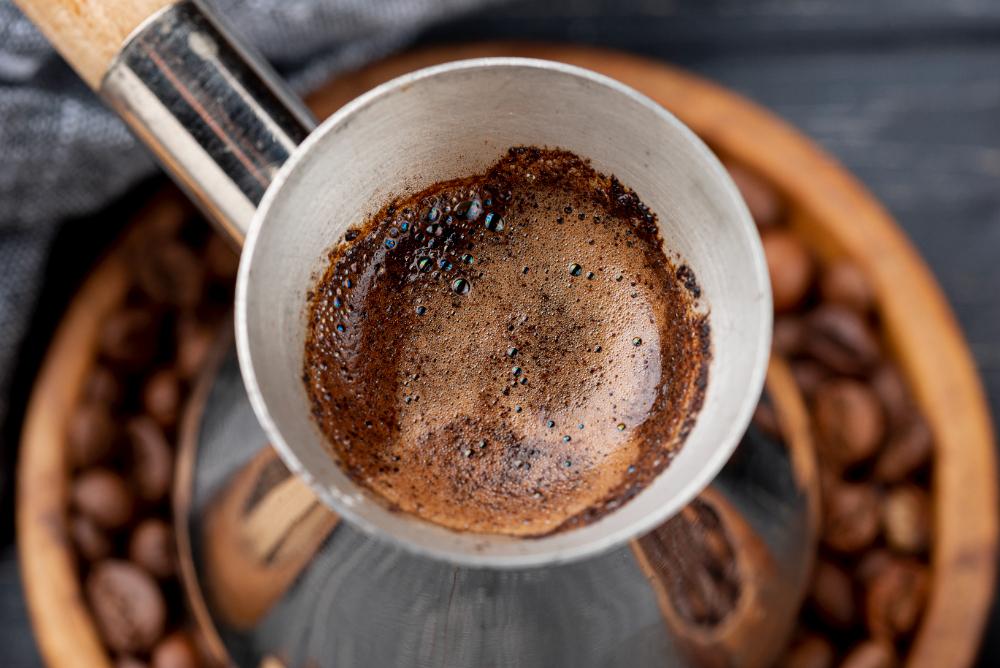The secret of coffee's invigorating effect lies in caffeine, an alkaloid that slows down the fatigue processes in our brain. We have already written that the harm of this substance is greatly exaggerated. In moderate quantities, caffeine is safe for a healthy adult. But only in moderate quantities, and provided that you do not have problems with your heart, blood vessels, or other contraindications.
This does not mean that people who are contraindicated to caffeine should completely give up aromatic espresso. For them, as well as for those who want to indulge themselves with their favorite drink more often, but do not want an "overdose", decaffeinated coffee is produced. Yes, it is slightly inferior to a regular cup. However, it is still coffee caffeine has almost no smell and taste, therefore, with proper decaffeination, the taste and aroma characteristics of the variety remain at an acceptable level.
Decaffeination – what is it?
This is the professional name for the process of removing the alkaloid caffeine from coffee beans. Green beans are always processed. The technology was first used at the very beginning of the last century. The invigorating substance was removed from the beans by dissolving them with benzene.
The invention was used until the carcinogenic properties of benzene were discovered, after which it fell into oblivion (benzene could not be completely removed from coffee after processing). However, new methods were invented. Let us say right away that the complete release of caffeine from the grain is an unattainable ideal. In coffee labeled DECAFF or DECAFFEINATED it still remains, although in a microconcentration (somewhere around 0.01%).
The extent to which the character of the variety is affected during decaffeination depends on the processing technology.
How to Make Decaffeinated Coffee? Basic Technologies
There are four main, or most common, methods of decaffeination. In all of them, green beans are first soaked in hot water to open them up. Then the process varies: some methods are based on the use of solvents, others - organic concentrates or carbon dioxide.
Traditional solvent technology
You can find this method under the names "European", "direct", "regular". It is the most common, simple and inexpensive to implement, but with serious disadvantages.
What is decaffeination by the traditional method? At the first stage, the beans are treated with hot steam for half an hour. Then they are kept in solvents for about ten hours. Methylene chloride or ecitelate are currently used as the latter. At the final stage, they are soaked for several hours to remove the remaining solvents.
The technology has two disadvantages. First: along with caffeine, coffee loses other substances, which harms the aroma and taste. Second: soaking does not allow the solvent to be completely removed. As a result, the coffee is not entirely natural. Of course, methylene chloride and ecitelate are not as dangerous as benzene. But why do you need foreign substances in your coffee?
Decaffeinated coffee from supermarkets is usually processed using the traditional direct technology.
Swiss Decaffeination Method
A complex and environmentally friendly method of removing caffeine from beans. Does not involve the use of solvents. It was invented in Switzerland in the second half of the 20th century. First, green beans are soaked in water to remove caffeine and flavor components. But these beans are not sold. Then the water is drained and passed through carbon filters. As a result, the caffeine leaves the water, but the flavor components remain. This is how a special green coffee extract is obtained.
A new batch of beans is soaked in the extract. The caffeine passes into the water, but the substances responsible for the taste and aroma do not. Because the places are occupied. Thus, the coffee is decaffeinated, but almost all the flavor and aroma substances remain with it. An excellent technology with one drawback it makes coffee much more expensive.
Decaffeination using
The most modern technology for removing caffeine from green beans, invented and patented in Germany. Instead of a solvent, the method involves the use of compressed carbon dioxide (carbon dioxide). The advantage of the method is the safety of CO 2 and the fact that the gas acts selectively on caffeine - it removes only it, without affecting the flavor and aroma components.
First, the green beans are soaked in water as usual. Then they are placed in a stainless steel container, called an extraction vessel. The vessel is sealed and CO2 is pumped into extract the caffeine. The gas turns into liquid and acts as a solvent for the alkaloid. The remaining substances remain in the beans. After ten hours of processing, the gas is released from the container. No trace of carbon dioxide remains in the beans.
The technology is as effective and safe for consumers as the Swiss method. At the same time, it does not affect the final cost of coffee as much.
Coffee roasters that care about the quality of their product and your health sell decaffeinated coffee, processed either by CO2 or Swiss technology. Caffeine is removed from such coffee to the maximum, while the taste and aroma are preserved almost unchanged.



